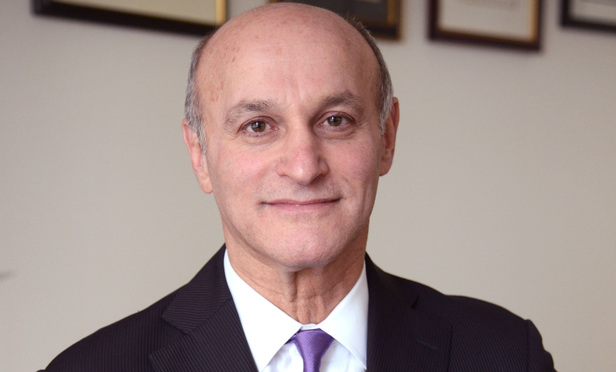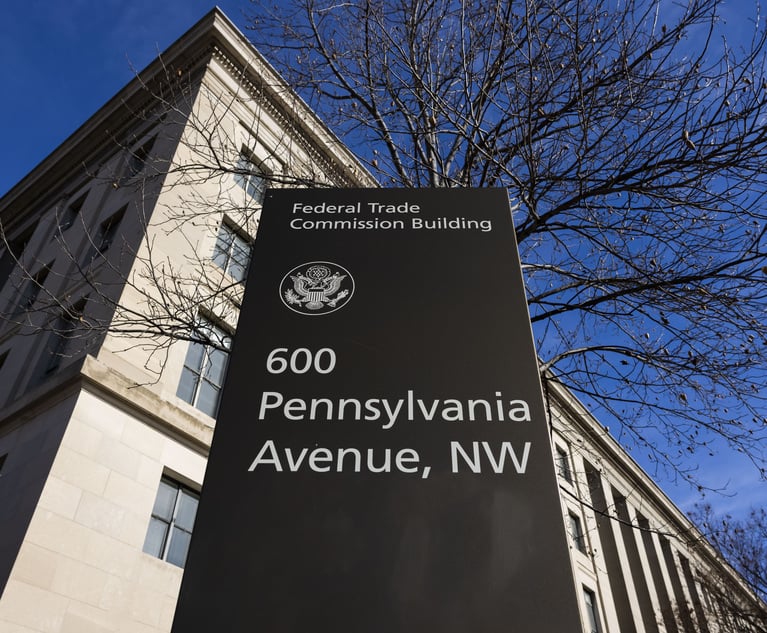Working Together to Achieve Excellence
Separation of powers was designed to bind governmental authority by creating tension among the branches, with each limiting the others. Nevertheless, to accomplish important goals and necessary reforms, the three branches of government frequently must collaborate and support one another to be successful.
April 30, 2018 at 03:50 PM
6 minute read

Separation of powers is a doctrinal element of both the federal and New York state constitutions. Derived from principles espoused by Montesquieu, the 18th century French philosopher, the United States from its very inception has strongly embraced this doctrine. Essentially, governmental authority is divided into legislative, executive, and judicial powers, with each assigned responsibilities and functions so that no one branch is omnipotent. Separation of powers was designed to bind governmental authority by creating tension among the branches, with each limiting the others. Nevertheless, to accomplish important goals and necessary reforms, the three branches of government frequently must collaborate and support one another to be successful.
Responsible for administration of the court system, the New York State Judiciary's mission is to promote fair and efficient justice. Chief Judge Janet DiFiore has made this the singular focus of her Excellence Initiative. In striving for excellence, it is apparent that, yes, we are an independent government entity, but to achieve our goals we must receive support and assistance from the two other branches of government. Indeed, the Judiciary must foster and encourage cooperation among the three branches if we are to administer justice effectively.
Perhaps the leading example of the need for this collaborative exchange is the Judiciary's budget. Each year our branch of government drafts a comprehensive financial proposal, taking into consideration the fiscal climate of New York state at the time, and presents it to the Governor on December 1st for the upcoming fiscal year (beginning April 1st). In mid-January, the Governor transmits the Judiciary's budget proposal, with any comments he may have, to the Legislature, along with the Executive Branch's budget proposal. Representatives of the Judiciary then have extensive discussions in the ensuing weeks with members and staff of the Legislature and with Executive branch officials. This culminates in legislative enactment of a budget by the start of the fiscal year that meets the Judiciary's needs in fulfilling its mission and also fits properly within the overall fiscal plan for the state.
Juvenile justice reform is another example of the cooperative relationship among the three branches. For far too long, New York was one of only two states that treated all young people under the age of 18 as adults and processed them in criminal court for even the lowest-level crimes. For close to a decade, the Judiciary had been a strong advocate for raising the age of criminal responsibility in this state. Addressing this problem as best we could on our own, we created Adolescent Diversion Court Parts, designed to improve the criminal courts' treatment of 16- and 17-year-olds charged with non-violent offenses. Although this program yielded successes, it was not enough. We recognized that there was only so much we could do independently of the other two branches, and that the ultimate solution was legislative reform. Last year, the Governor and the Legislature agreed. Through two phases, to be fully implemented by October 2019, 16- and 17-year-olds charged with misdemeanors and most felonies will be adjudicated in Family Court, where no criminal record will result, and where they will be connected with much needed programs and services.
Another area in which we have made significant strides by working with the Executive and Legislative branches is the establishment of centralized arraignment court parts. A long-standing criticism of our town and village courts is that many off-hours arraignments are held without a defense attorney present in these important proceedings—in clear violation of constitutional requirements. The necessity to conduct off-hours arraignments in these courts results from the lack of overnight holding facilities in less populous jurisdictions, and the absence of defense counsel results from insufficient staffing to cover proceedings throughout the night in a given county's multiple Justice Courts. We came up with a proposed solution, but it required changes in several areas of the law—the Judiciary Law, Criminal Procedure Law, and the Uniform Justice Court Act. By authorizing a centralized arraignment part in counties throughout the state, individuals arrested anywhere in the county may be arraigned, with defense counsel present, in a single convenient location. This greatly reduces unnecessary delays and realizes significant savings to localities, all while meeting constitutional mandates.
The Judiciary has spent nearly a decade working closely with the Executive and Legislative branches to safeguard against wrongful convictions. These miscarriages of justice represent the worst possible result in our criminal justice system. To address these grave injustices, the Judiciary created the New York State Justice Task Force to examine the causes of wrongful convictions and to recommend changes and safeguards for the criminal justice system to adopt. The Task Force includes representatives from all parts of the criminal justice system—judges, prosecutors, defense attorneys, members of law enforcement, legislators, Executive branch officials, forensic experts, victim advocates, and legal scholars. The Task Force's efforts have spurred the Governor and the Legislature to adopt a wide range of statutory reforms, including the expansion of the state DNA database, increased defense access to DNA testing, mandated videotaping of interrogations in the most serious cases, and safeguards for identification procedures.
These are just a few examples of how the Judiciary has effectively collaborated with the other branches of government to improve the administration of justice in New York. Although we can draw satisfaction from these accomplishments, further collaboration will be necessary to fully achieve the goals of the Chief Judge's Excellence Initiative. In the future, we will focus our attention on other areas in need of reform, including bail and criminal discovery. Where the Judiciary determines that executive and legislative support are needed, we will continue to strive to work together with our partner branches of state government so that we can ensure the highest quality of justice that the public deserves. In the framework of our government, we recognize that excellence is best achieved with the cooperation and combined efforts of each branch.
Lawrence K. Marks is Chief Administrative Judge of the New York State Unified Court System.
This content has been archived. It is available through our partners, LexisNexis® and Bloomberg Law.
To view this content, please continue to their sites.
Not a Lexis Subscriber?
Subscribe Now
Not a Bloomberg Law Subscriber?
Subscribe Now
NOT FOR REPRINT
© 2025 ALM Global, LLC, All Rights Reserved. Request academic re-use from www.copyright.com. All other uses, submit a request to [email protected]. For more information visit Asset & Logo Licensing.
You Might Like
View All
What Businesses Need to Know About Anticipated FTC Leadership Changes
7 minute read
Trending Stories
- 1SurePoint Acquires Legal Practice Management Company ZenCase
- 2Day Pitney Announces Partner Elevations
- 3The New Rules of AI: Part 2—Designing and Implementing Governance Programs
- 4Plaintiffs Attorneys Awarded $113K on $1 Judgment in Noise Ordinance Dispute
- 5As Litigation Finance Industry Matures, Links With Insurance Tighten
Who Got The Work
J. Brugh Lower of Gibbons has entered an appearance for industrial equipment supplier Devco Corporation in a pending trademark infringement lawsuit. The suit, accusing the defendant of selling knock-off Graco products, was filed Dec. 18 in New Jersey District Court by Rivkin Radler on behalf of Graco Inc. and Graco Minnesota. The case, assigned to U.S. District Judge Zahid N. Quraishi, is 3:24-cv-11294, Graco Inc. et al v. Devco Corporation.
Who Got The Work
Rebecca Maller-Stein and Kent A. Yalowitz of Arnold & Porter Kaye Scholer have entered their appearances for Hanaco Venture Capital and its executives, Lior Prosor and David Frankel, in a pending securities lawsuit. The action, filed on Dec. 24 in New York Southern District Court by Zell, Aron & Co. on behalf of Goldeneye Advisors, accuses the defendants of negligently and fraudulently managing the plaintiff's $1 million investment. The case, assigned to U.S. District Judge Vernon S. Broderick, is 1:24-cv-09918, Goldeneye Advisors, LLC v. Hanaco Venture Capital, Ltd. et al.
Who Got The Work
Attorneys from A&O Shearman has stepped in as defense counsel for Toronto-Dominion Bank and other defendants in a pending securities class action. The suit, filed Dec. 11 in New York Southern District Court by Bleichmar Fonti & Auld, accuses the defendants of concealing the bank's 'pervasive' deficiencies in regards to its compliance with the Bank Secrecy Act and the quality of its anti-money laundering controls. The case, assigned to U.S. District Judge Arun Subramanian, is 1:24-cv-09445, Gonzalez v. The Toronto-Dominion Bank et al.
Who Got The Work
Crown Castle International, a Pennsylvania company providing shared communications infrastructure, has turned to Luke D. Wolf of Gordon Rees Scully Mansukhani to fend off a pending breach-of-contract lawsuit. The court action, filed Nov. 25 in Michigan Eastern District Court by Hooper Hathaway PC on behalf of The Town Residences LLC, accuses Crown Castle of failing to transfer approximately $30,000 in utility payments from T-Mobile in breach of a roof-top lease and assignment agreement. The case, assigned to U.S. District Judge Susan K. Declercq, is 2:24-cv-13131, The Town Residences LLC v. T-Mobile US, Inc. et al.
Who Got The Work
Wilfred P. Coronato and Daniel M. Schwartz of McCarter & English have stepped in as defense counsel to Electrolux Home Products Inc. in a pending product liability lawsuit. The court action, filed Nov. 26 in New York Eastern District Court by Poulos Lopiccolo PC and Nagel Rice LLP on behalf of David Stern, alleges that the defendant's refrigerators’ drawers and shelving repeatedly break and fall apart within months after purchase. The case, assigned to U.S. District Judge Joan M. Azrack, is 2:24-cv-08204, Stern v. Electrolux Home Products, Inc.
Featured Firms
Law Offices of Gary Martin Hays & Associates, P.C.
(470) 294-1674
Law Offices of Mark E. Salomone
(857) 444-6468
Smith & Hassler
(713) 739-1250








